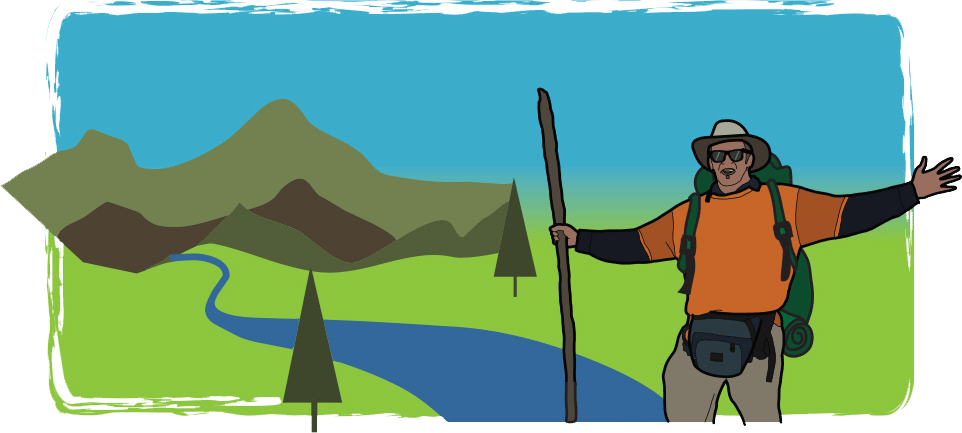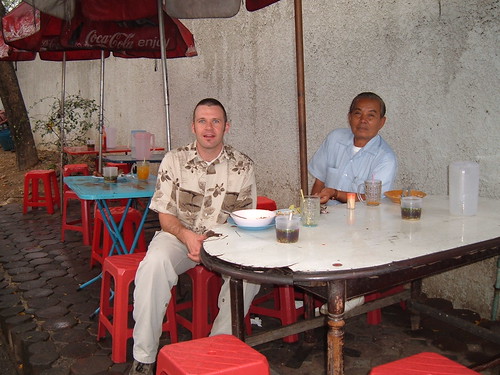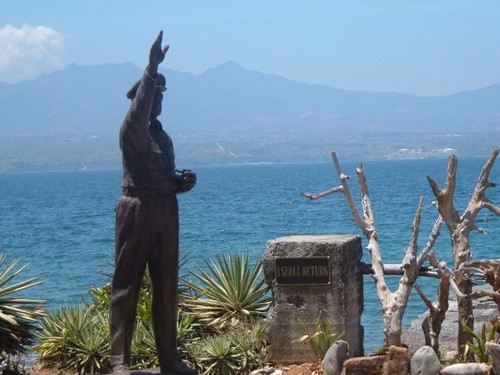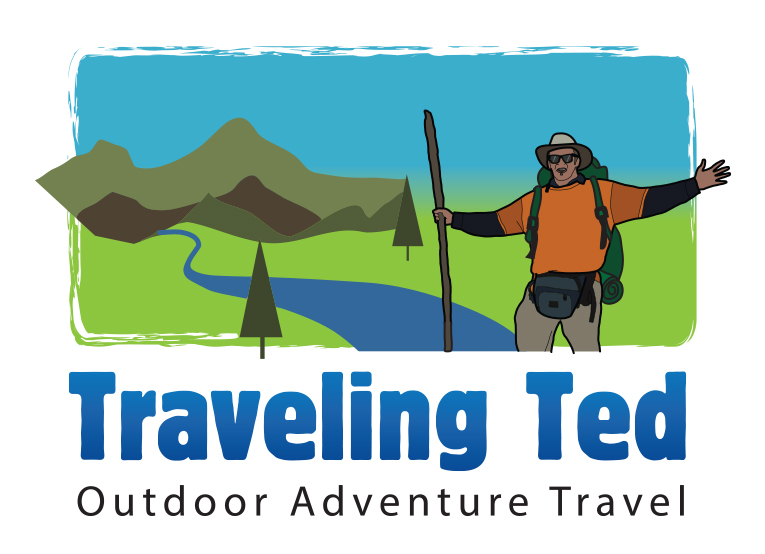Adventure travel to a new country is one of the most exciting things one can do. It is also great revisiting countries too, but there is not the same type of anticipation as when one is making their virgin trip to a new country.
It is not just because there is the desire to knock countries off the have been list, although that plays a part, but there is something about the thrill of the unknown. No matter how many countries one has traveled to one cannot 100% know what to expect about the country until they are on the ground.
Some people when they travel will research every little detail about the country and plan out a rigid itenarary. Others just like to arrive and wing it. Planning a trip is completely up to the individual and there is no right or wrong answer about how much someone should learn and plan for an upcoming trip; however, there are some aspects that are helpful to know in advance.
This post only covers the points about visiting a country. If you intend to move to another country, check out the Apostille Service.
Here are five aspects one should learn in each country before arrival:
1. Know some key words in the language where you are visiting –
Learn “hello,” “goodbye,” “no,” “yes,” and most importantly “THANK YOU” and “PLEASE.” Another good one to learn is “no problem.” In Thai it is mai pen rai and it is a phrase that I found very handy.
The more you know the better, but it is not necessary to be able to conjoin verbs in that language in order to enjoy the people and the country. Even if people in the country you are visiting are well versed in English they will appreciate any attempt to speak with them in their language. Once you are in the country continue to make an effort to learn and seek out locals for help.
2. Know the cab fares
In Thailand they have metered taxis that are incredibly cheap. Many of the taxi drivers do not want to turn their meter on when they get a foreigner. They will ask where you want to go and then say 200 baht when it would be less than 100 baht if they put on their meter. Just insist they turn on their meters and if they do not comply then get out. There are like 55,000 taxis in Bangkok, so it is not too tricky to find one that will turn it on.
Each country and city has its own unique system of cab fares and also some unique scams in order to separate the traveler from more of their cash. It is easy to find this out by googling the country or city with cab fare. Lonely Planet guides also usually have this information.
3. Learn about the transport system in the country
It is helpful to know about how to best get around in the country before arrival. I pulled into Tokyo and tried to arrange for a night bus to Kyoto. It took me over two frustrating hours to find the bus. Sometimes when traveling there is no internet access and you have to rely on help from others. If I had studied this before hand on the internet I am sure it would have been smoother.
4. Learn a little history of the country
It is not necessary to prepare PHD doctorate paper on the historical relevancy of the country, but learning the basics before you go is a must. This is so easy to do, so there is no excuse not to learn this. Wikipedia and many other websites offer condensed histories that one can read in 10-15 minutes.
Learning the history of a place really augments the travel experience in my opinion. Not only do you have some sort of context for what you see, but it can also lead you to places to see that you might not have known about. For instance, the island of Corregidor in Manila Bay was crucial battle site in World War II and a great place to visit, but if you did not know the historical importance of the island it would be easy for travelers to pass it by.
5. Learn the countries’ National Parks and visit them
Many people from Europe and other countries come to America just to explore our National Parks. A National Park is a country saying this is our most beautiful place, yet these amazing places are often overlooked by travelers when they visit other countries.
Many backpackers travel from big city to big city and miss out on the most incredible scenery a country has to offer. My favorite place in Thailand was Khao Yai National Park and in Vietnam it was Bach Ma National Park, but many who travel to these countries have never heard of these two places. Take at least two days for the best national park inside the country and go kayaking, hiking, bird watching, zip lining, or whatever adventure travel recreation that park is known for.
Did I miss anything? Is there a tip that you have that is not in the top five? Please let me know in the comment section if you have any suggestions along the same lines.
Stay tuned,
The goal of Traveling Ted is to inspire people to outdoor adventure travel and then provide tips on where and how to go. If you liked this post then enter your email in the box to get email notifications for each new entry. Daily travel photos are excluded from your email in order to not flood you with posts. There is no spam and email information will not be shared. Other e-follow options include Facebook (click on the like box to the right) or twitter (click on the pretty bird on the rainbow above).















This may not necessarily apply to adventure travel but if there are places you want to see, check the schedule. Museums, historic sites, and other places aren’t always open M – F. Some have odd days and hours so if you plan to visit a place you really want to see, check the dates, times, and costs just so you know you won’t miss out on something you really want to see. There is always room to be spontaneous but just have a general knowledge about what is happening and when before you go. Also, check to see if there are any festivals or big events that could limit hotel availability.
Jeremy B recently posted..Lake Bled- Slovenia – a photo essay
That’s a great suggestion. And, is the place that you really want to see open at all at that time. For example: A lot of people come to Santa Fe w/ Georgia O’Keeffe as a primary motivator. Her home is open seasonally and tours book up and the museum closes for about a few weeks a few times a year to change exhibits. We get some VERY disappointed people!
santafetraveler recently posted..Dining in San Diego’s revitalized Gaslamp Quarter
#1 is SO important!!! Drives me crazy that people don’t feel the need to learn at least hello and thanks in the language of the country they are traveling to. Ugh!!!
Great suggestions. Another thing that I find important is to learn the currency- what it looks like- and the conversion rates. That helps to know what money you’re giving, what to expect back in return and how much stuff is actually costing you in your home currency, which is great to know. Sorry for the LONG run-on sentence!
santafetraveler recently posted..Dining in San Diego’s revitalized Gaslamp Quarter
Great basic pointers you offer here..thanks..
Cheers..
Charles Higgins recently posted..Burger King’s Whopper Bar opens at Rio Las Vegas – National Las Vegas Examinercom
I used an old Lonely Planet guide for a year’s stay in Italy and it was marvelous, with loads of information about major cities and small towns, festivals, transportation, etc. So I purchased this one for Australia with high hopes. When it arrived I was first dismayed by its weight. The paper is very heavy stock, great for printing color photos…which is most of the book…but not something you want to carry or even put in your luggage. Its 408 pages weigh more than the 692 of my old Frommer’s.
We’re going to visit three cities; Sydney, Melbourne, and Adelaide plus Kangaroo Island. I’d already pulled a lot of info from the Australia website to plan the itinerary. If I’d been using this book, however, I’d not have much of a trip. The Sydney section is only 42 pages long (including 4 pages of maps) and about 1/3 of the remainder is just glossy photos, some brief “highlights” of the harbor and beaches by–guess what–a harbor cruise captain and the owner of a surf school. Information that is provided is VERY skimpy. There’s nothing about several of the local transportation options (ie metro and local buses) and just a line or two about the ones that are described. The description of the Harbor Bridge simply says you can choose between the over the top climb and a Discovery climb through the inner workings.
By contrast I have a 2006 Frommer’s Guide that gives MUCH more detail–86 pages of more compact type and no glossy photos. Do I really need to see 1/3 page photos of a flower, water in the harbor, and an opera house close-up? Frommer’s also gives many more hotel and restaurant listings and in greater detail. The Frommer’s section on the opera house lists much more about the tours and ticket purchasing options as well as more details about the building.
When I looked up Adelaide in this book, there was exactly ONE SENTENCE about the city, two sights, and a short list of hotels and and restaurants. Two pages in total. Kangaroo Island got less than a page including the big photo of the seals. Frommer’s gives 4 paragraphs of background on Adelaide, info about the festivals, a money-saving transit pass, and 20 pages of coverage in total. They give 9 pages to Kangaroo Island including the best time to go and info about a pass that will save money if your stay is 3 or more days. Plus lots more.
Enough griping. Bottom line: DON’T BUY THIS BOOK. Pick up a Frommer’s or some other guide that actually provides needed information, not gloss. And you won’t have to pack a brick in your suitcase either!
Of these, I think learning the history will give people the strongest appreciation for the place. The basic travel phrases help, but I can usually get those after a day or two. In an interview in intelligent traveller about guidebooks today and 100 years ago the person interviewed said that 100 years ago more information was in guidebooks about history and language of a place. Now guidebooks devote more space to hotels and restaurants. I don’t really need to know any more about the other hotels in a city after I book mine. Even if I go some place without a hotel booked in advance, unless its high season, it’s pretty easy to do without a book. Restaurants, also easy to find by striking up a conversation with someone. And while the same can be said about talking to people to learn some of the history, I feel like a better traveler with at least some more than basic level of knowledge about it.
Great point Ann. I think a country’s history says a lot about what they are now and gives a glimpse to their culture. A taxi driver or any person you meet can give you a ton of information in a five minute conversation that is better in 100 pages of a guide book.